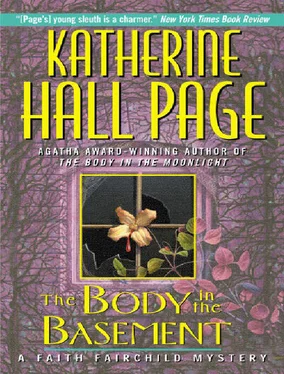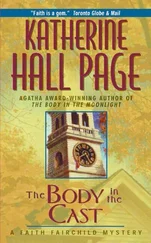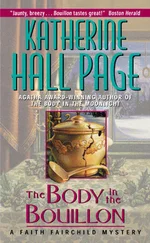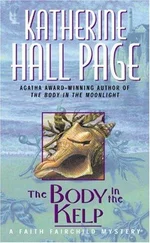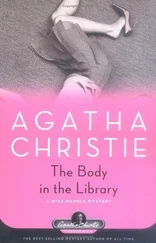She rol ed over and propped herself up on one elbow, looking at the stone that marked her father's grave. What was the line from Edna St. Vincent Mil ay? "I am not resigned to the shutting away/of loving hearts in the hard ground"? That was it. And Pix was not resigned. Not for her father, nor Mitch, nor Addie.
Rebecca had told Earl, the same day as the party Pix gave for her brother. Possibly while the Mil ers and Fairchilds were gazing at a magnificent pink-and-purple sunset from a spot on the Point where al hoped a deck would be by Labor Day.
Lilies of the val ey—they grew in dense clusters on the edges of the cemetery. A British friend of Pix's had once told her it used to be considered very bad luck in her country to plant a bed of lilies of the val ey, that the person who did would be the next to die.
But it was not the person who sowed who perished.
Rebecca had given Addie the plant poison in every way imaginable. She'd brewed her sister-in-law's tea from the deadly roots and added the water in which she'd placed the cut leaves to Addie's juice. She'd even, she confessed to Earl, pushed Addie's tiny quilting needles into the berries, hoping she might mortal y prick herself. One or al had worked.
And the quilt was no coincidence: End of Day.
Rebecca had made it herself years ago, hiding it away when Addie had criticized the handiwork—hidden away, but not forgotten.
Had she wanted to be caught? If she hadn't wrapped Addie in the quilt to try to link her crime with the other, no autopsy would have been done on someone Addie's age.
And the autopsy, like so many others, had not been able to pick up this natural poison. It mimicked heart failure. A failure of the heart—Addie's. Rebecca's.
Pix lay back down again. It felt good. Peaceful. The only noise was the raucous cries of the gul s and, if she listened very hard, the sound of her own blood pulsing.
Slow, steady—reliable. She sighed. Another epitaph? But the reliable part wasn't so bad. They were reliable women: her mother, her daughter, and Pix herself. So different—
and so alike. She was looking forward to spending the rest of the summer in their company. Maybe she'd get to the attic.
Maybe not.
EXCERPTS FROM
HAVE FAITH
IN YOUR KITCHEN BY
Faith Sibley Fairchild
and Friends
A WORK IN PROGRESS
PIX ROWE MILLER'S . FAMILY FISH CHOWDER
6-7 slices of bacon,
1/4" thick
2 cans (3 cups) evaporated milk
3 cups diced yel ow onions
5-6 medium potatoes, peeled
1 cup whole milk
1 lb. haddock
salt
1 lb. cod
freshly ground pepper
Fry the bacon, remove from the pan, and place on a paper towel. Sauté the onions in the bacon fat and set the pan aside.
Cut the potatoes in half the long way, then into 1/4"
slices. Put them in a nonreactive pot large enough for the chowder. Cover the potatoes with water and boil until tender. Be careful not to put in too much water or the chowder wil be soupy. While the potatoes are cooking, cut the fish into generous bite-sized pieces. When the potatoes are ready, add the fish to the pot, cover and simmer until the fish flakes.
When the fish is done, crumble the bacon and add it to the pot along with the onions and any grease in the pan, the evaporated and whole milks. Bring the mixture to a boil, cover, and turn the heat down. Simmer for five minutes and add salt and pepper to taste.
Chowder invariably tastes better when made a day ahead.
The word "chowder" comes from the French, "la chaudière," a very large copper pot. Several centuries ago, French coastal vil ages would celebrate the safe return of their fishing fleets with a feast. The main course was a fish stew made in la chaudière into which each fisherman would toss part of his catch. "Chaudière" became "chowder" as the tradition made its way across the Atlantic to Canada and Down East. Chowders have continued to be just as idiosyncratic as these long ago concoctions. Pix does not even want to hear about the Manhattan version, but others of us are more open. The Rowe recipe may be happily modified in al sorts of ways.
The chowder is stil quite delectable with olive oil instead of bacon fat. You may also use salt pork. Two kinds of fish make for a more interesting chowder, but these can be any combination of the fol owing: haddock, cod, pol ack, monkfish, and hake. Final y there is the question of garnishes: dil , chopped parsley, oyster crackers, butter are al good. And Faith and Pix's friend on Sanpere, Jane Weiss, swears by her chowder to which she adds curry spices!
LOUISE FRAZIER'S
SOUTHERN CORN BREAD
1 1/2 cups stone ground corn- meal
1/2 tsp. salt
1/2 tsp. baking soda
3 tbsps. flour
1 cup buttermilk
2 tbsps. sugar
2 eggs, wel beaten
3 tsps. baking powder
4 tbsps. dripping
Preheat the oven to 350°. Combine the dry ingredients and stir in the wet. Pour the mixture into a lightly buttered 8"
square pan and bake for 40 minutes, checking after 30.
This is a dense, chewy cornbread and serves 6-8. Again, substitutions can be made: skim buttermilk, Egg Beaters, and butter substitutes for the dripping and to grease the pan. Do try to find stone ground cornmeal, though. It gives the cornbread a wonderful flavor and texture. The batter may also be fried in a large pan on top of the stove, flipping it over so both sides are crunchy.
FAITH'S EMERGENCY SEWING
CIRCLE SPREADS: CHUTNEY CHEESE
AND CHÈVRE WITH HERBS
Chutney Cheese:
8 ounces plain cream cheese, room temperature 1 cup chutney
Cream the chutney and cheese together by hand. Do not use a food processor or blender otherwise you end up with cheese sauce. Pix used her own green tomato chutney, which is a spicy combination of the tomatoes, onions, raisins, and walnuts. Al and any varieties of chutney work wel .
Chèvre with Herbs:
4 ounces plain cream cheese, room temperature 4-5 ounces chèvre (100% goat's milk cheese) Herbs to taste Herbed chèvre is readily available in most markets and cheese shops. Pix likes to keep things simple and buys the herbed variety. Combine the cheeses by hand.
The cream cheese makes the combination easier to spread. If you are using your own herbs, rosemary, tarragon, and summer savory are good choices, alone or in combination.
Use both spreads to stuff snow or sugar snap peas, spread on cucumber or zucchini rounds, sweetmeat biscuits, water biscuits, or slightly toasted miniature bagels.
The chutney spread makes a tasty sandwich when combined with smoked turkey or Virginia ham or by itself on date and nut or buckwheat walnut bread.
BAINBRIDGE BUTTERSCOTCH
SHORTBREAD
1 cup unsalted butter
1/4 tsp. salt
'/z cup dark brown sugar
1 cup finely chopped walnuts or pecans
2 cups flour
1/2 tsp. baking powder
Sift the flour, salt, and baking powder together and set aside. Cream the butter until soft and gradual y add the sugar. Add the flour mixture a little at a time and mix wel .
Refrigerate for one hour.
Divide the dough in half and keep one portion in the refrigerator while rol ing out the other to approximately 1/4"
thickness. (The dough gets soft quickly.) Sprinkle the dough with the nuts and gently press them in with the rol ing pin.
Cut into 11/2" squares. Pix uses a paper pattern as she is hopeless at estimating things like this, unlike Faith. Prick with a fork and place the squares on an ungreased cookie sheet. Repeat with the rest of the dough.
Bake until golden brown, approximately 15 minutes in a preheated 350° oven. Makes 6 dozen squares. This is a devastatingly rich, crumbly cookie.
FAITH FAIRCHILD'S MAINE
Читать дальше
